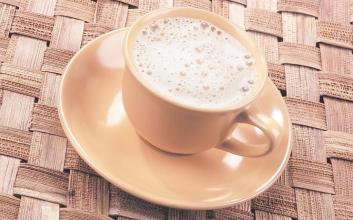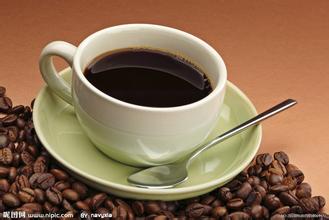Introduction to the Brand of Grinding scale in Dominica Coffee Bean production area

Dominica is located on the island of Hispaniola in Central America, just above Martinique Island. Dominica occupies 2/3 of the right half of Hispaniola, while the other 1/3 to the west is the territory of Haiti. It is rich in natural resources, rich in coffee, cocoa, oranges, bananas and flowers. In recent years, coffee ranks second in the country's gross domestic agricultural output, second only to rice, and is an important cash crop in the country. Dominica coffee, like Puerto Rico and Jamaica coffee, is Caribbean coffee with a similar quality, but less famous, mainly because of the way the coffee is handled rather than the quality of the berries. Coffee in Dominica is grown in highlands and lowlands, and its taste is slightly different. The highland is sour, but the taste is rich; the lowland is less sour and tastes smoother.
Boutique coffee has become popular in recent years. The high-quality coffee beans produced by some Dominican estates have rich aroma, mellow taste and moderately bright sour taste, which is not far from the more famous Puerto Rico beans or Jamaican beans. It's also coffee worth tasting.
Unlike coffee produced in Haiti, most of the coffee grown in the Dominican Republic has been washed, which is a symbol of high quality. Miniga Coffee uses a washing method to treat coffee beans, so that the quality of treated coffee beans is more guaranteed. The coffee beans treated by washing method retain more original flavor than the drying method, and the aroma is pure and soft.
Carefully selected in this way, the high-quality coffee of Dominica exudes a faint aroma and gives a faint fruity aroma, with a lingering finish and a smooth palatability. in the early 18th century, coffee was introduced to Domiga from Martinique. The northern region represented by Shebao and the southern region, including Okayabani Santo Domingo, produce fine coffee. Among them, the coffee produced by Santo Domingo and Barney, which is almost synonymous with domiga coffee, is a world-famous high-quality coffee. Santo Domingo coffee is characterized by freshness, elegance, fullness, excellent acidity and pleasant aroma, so it is worth it. The selection of Dominican coffee is usually done manually. The main basis for selection is according to the fullness of coffee particles, whether it is uniform, and then grade it. Generally speaking, coffee with full and uniform grains is easier to preserve. Only the fullest and most evenly grained coffee beans can be roasted to represent the best coffee in the country. The Dominican Republic is located in the east of the island of Haiti in the West Indies, bordered by the Republic of Haiti in the west, the Atlantic Ocean in the north and the Caribbean Sea in the south. With an area of about 49000 square kilometers and a population of 7.1 million, the Dominican Republic and the Republic of Haiti coexist on an island bordering Haiti. Like its neighbors, the Dominican Republic has a history of revolution and poverty, but now has democratic elections and the country is relatively stable that Santo Domingo is a 500-year-old city. Coffee produced by Santo Domingo and Barney, which is almost synonymous with Domiga coffee, is a world-famous high-quality coffee. Its flavor and taste characteristics: fresh and elegant, full particles, excellent acidity, pleasant fragrance
Important Notice :
前街咖啡 FrontStreet Coffee has moved to new addredd:
FrontStreet Coffee Address: 315,Donghua East Road,GuangZhou
Tel:020 38364473
- Prev

Introduction of Yunnan Huangmi Coffee Flavor description Grinding Calibration quality treatment method Manor
Beans treated with Yunnan coffee honey need to be well ventilated in the sun, otherwise the retained pectin mucosa is easy to ferment or mildew and cause bad smell. If you are exposed to the sun directly in the cement or on the ground with soil, it is easy to scratch and cut the coffee beans, which will lead to the invasion of bacteria, and the direct soil sun will make the coffee beans taste like dirt. (like the early Mantenin belt
- Next

Introduction to the producing area of Ethiopian Sunshine Sidamo Coffee Flavor description Grinding scale treatment
In the past, the Ethiopian sun exposure method used to spread wild coffee fruits directly on the mud ground for exposure. This method has two disadvantages: 1. After picking beans without special screening and treatment, uneven appearance and maturity are mixed together, the process is relatively rough, so the quality of coffee beans is unstable and prone to defective beans. two。 Coffee farmers usually live directly.
Related
- Detailed explanation of Jadeite planting Land in Panamanian Jadeite Manor introduction to the grading system of Jadeite competitive bidding, Red bid, Green bid and Rose Summer
- Story of Coffee planting in Brenka region of Costa Rica Stonehenge Manor anaerobic heavy honey treatment of flavor mouth
- What's on the barrel of Blue Mountain Coffee beans?
- Can American coffee also pull flowers? How to use hot American style to pull out a good-looking pattern?
- Can you make a cold extract with coffee beans? What is the right proportion for cold-extracted coffee formula?
- Indonesian PWN Gold Mandrine Coffee Origin Features Flavor How to Chong? Mandolin coffee is American.
- A brief introduction to the flavor characteristics of Brazilian yellow bourbon coffee beans
- What is the effect of different water quality on the flavor of cold-extracted coffee? What kind of water is best for brewing coffee?
- Why do you think of Rose Summer whenever you mention Panamanian coffee?
- Introduction to the characteristics of authentic blue mountain coffee bean producing areas? What is the CIB Coffee Authority in Jamaica?

